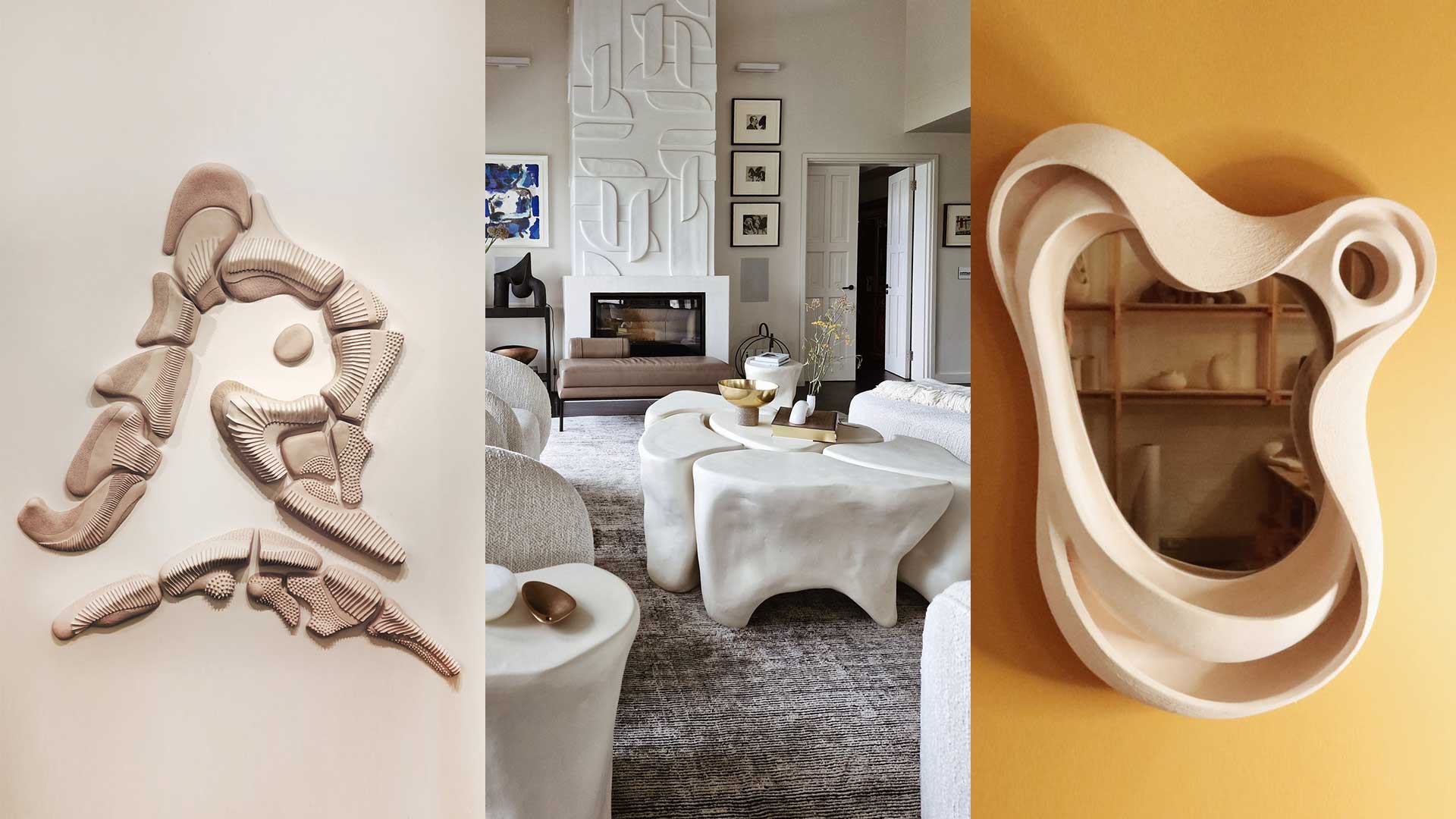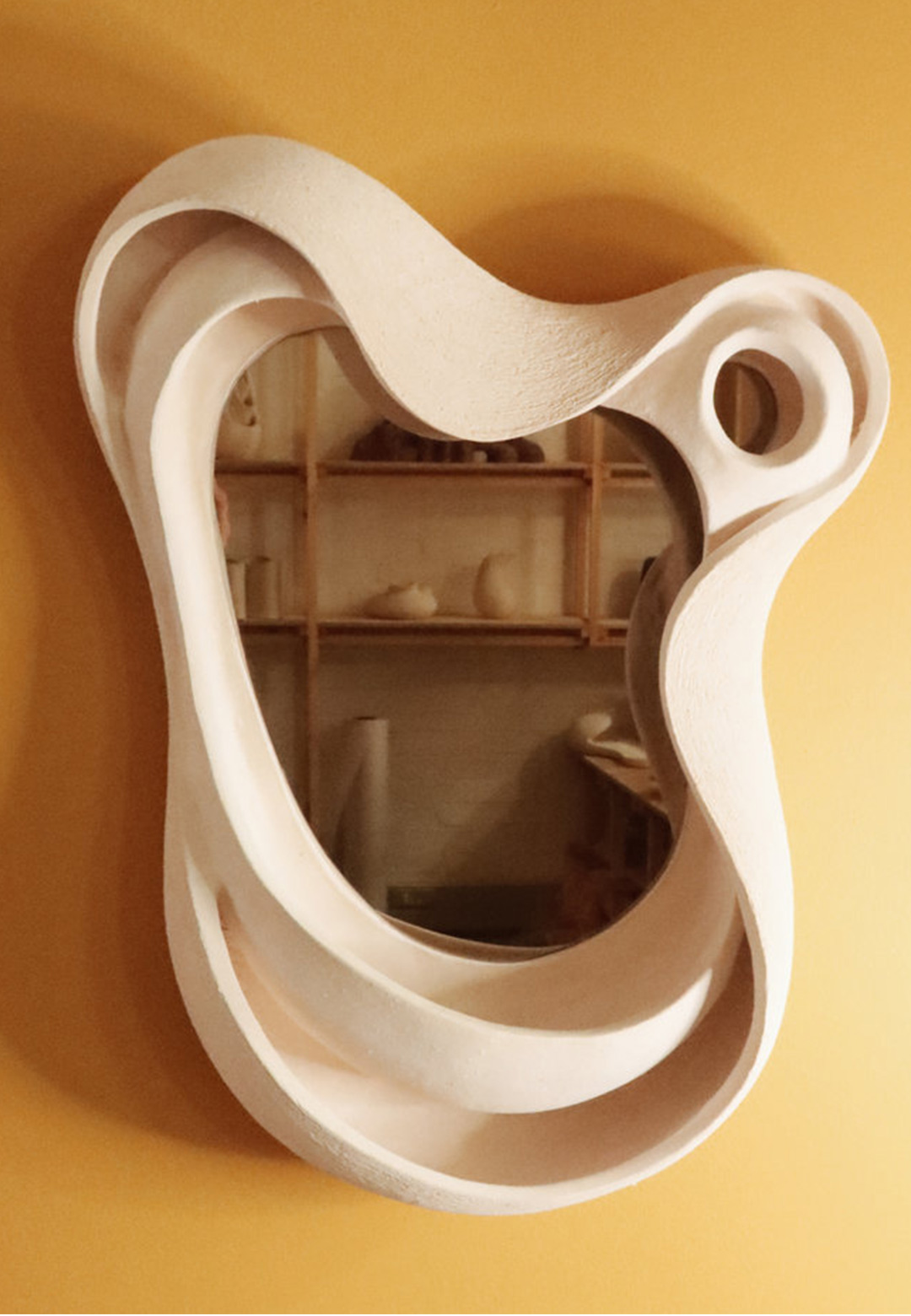South African designer Jan Ernst proudly announces his first design exhibition in Abidjan, Ivory Coast, which is commissioned by the Fougue Foundation. This showcase is nothing short of elegance, featuring five bespoke mirrors and three ceramic and bronze candelabras.
The Shape of Water ceramic mirrors dive into the human connection with water. This body of work draws inspiration from the intricate relationship between humans and water, exploring the multifaceted dimensions of our connection. The mirrors reflect not just outer appearances but also symbolise the introspective moments we experience in the presence of water. Each piece serves as a testament to the profound impact water has on our lives, both physically and spiritually. The exploration by the ceramic artist of these themes is brought to life through the organic nature of clay. The material folds gracefully into intricate, organic shapes, mimicking the reflective quality of water through the bespoke mirrors. Each piece tells a unique story, inviting you to explore the fluidity of existence through the eyes of the artist.
The Tide collection is a symphony of contrasts, that skillfully marry smooth bronze with textured matte ceramic bases. The choice of materials serves as a deliberate expression of the reflective qualities inherent in water, offering a dynamic interplay between light and surface. The fluid forms and organic shapes that define each candelabra, create a visual dialogue that transcends traditional design boundaries. Originally conceived as pure ceramic objects, the work underwent an evolution, with Ernst introducing bronze elements that now elegantly crown the ceramic bases. This marriage of materials results in a captivating fusion of nature-inspired curves and geometric precision.
The essence of the work lies in the organic forms that emerge from the dynamic interplay with the fluid nature of the material. Crafted from plaster reinforced with a stainless steel mesh, the resulting coffee table and side tables showcase a seamless fusion of artistry and functionality.
The coffee table exhibits a unique design where each element fits together like puzzle pieces. This intentional design allows for an expanding configuration, encouraging the table design to serve as cohesive units or standalone pieces. This approach to plaster furniture challenges traditional norms, ushering in a new era of artistic expression within the realm of functional design. The furniture designer draws inspiration from the intriguing amalgamation of natural forces and signifies the poetic synergy that takes place when different elements such as water, air or earth harmoniously come together.
Convergence delves into a more abstract concept, exploring the fusion of time and human relationships. It's a metaphorical representation of where the past and the present meet, akin to the intertwining of generations, and the interactions of people forging a new path forward. The mural takes on a profound role in conveying these intricate and thought-provoking concepts through its artistic expression and questions the possibilities of the future. Jan Ernst has employed white stoneware clay as the primary medium for this piece. The choice of material lends a unique, paleontological quality to the piece. It gives the impression of a relic from a forgotten era, reminiscent of fossils or ancient remnants of species, flora, or fauna that have long been extinct. The mural elicits a sense of enchantment, drawing viewers into a mystical realm. The intricate details of the ceramic pieces appear ancient, enigmatic, and yet strangely familiar as if they are from a time long past, or perhaps from a parallel world.






 Sign in with email
Sign in with email










What do you think?